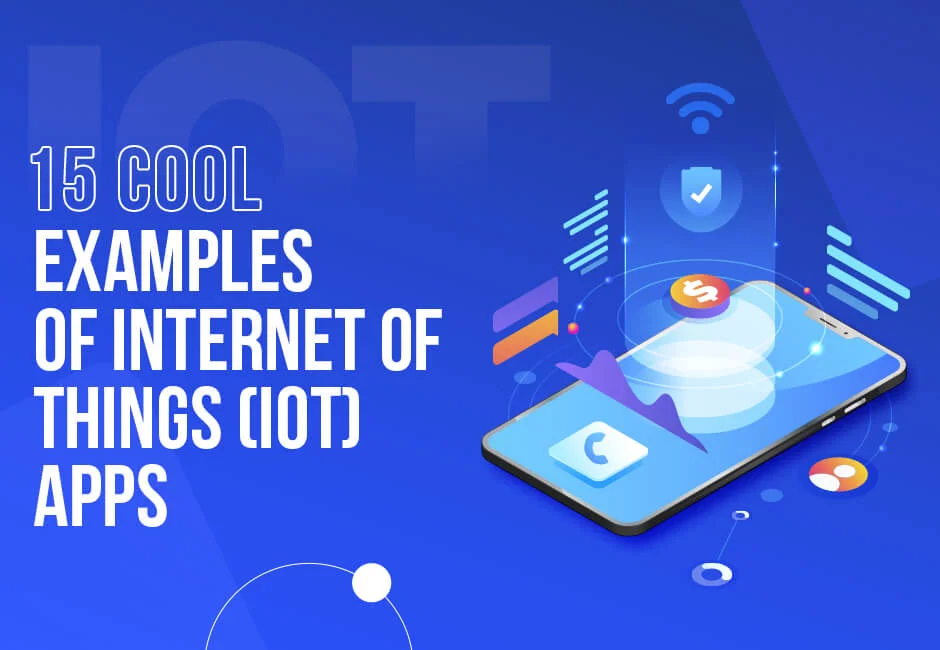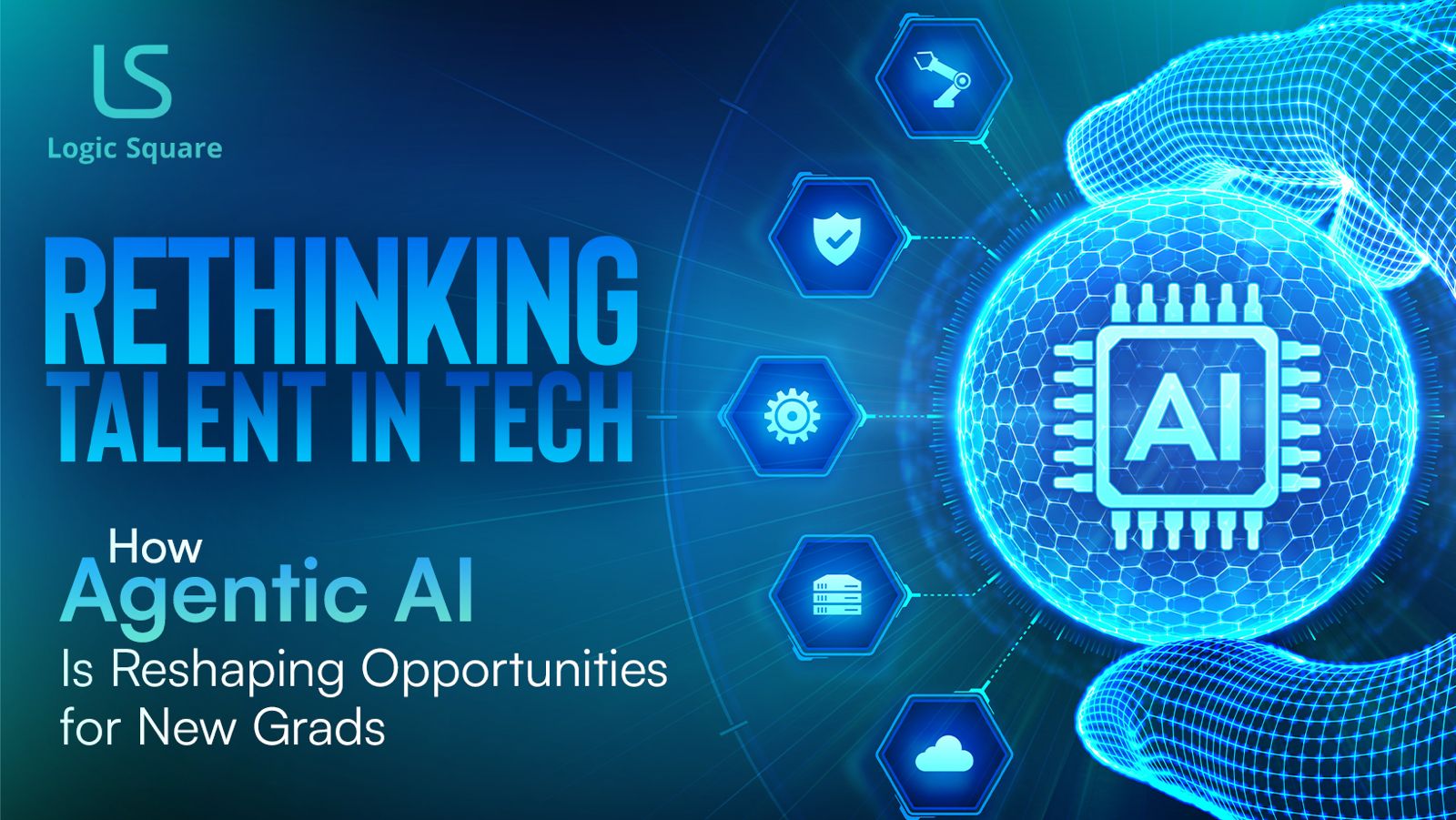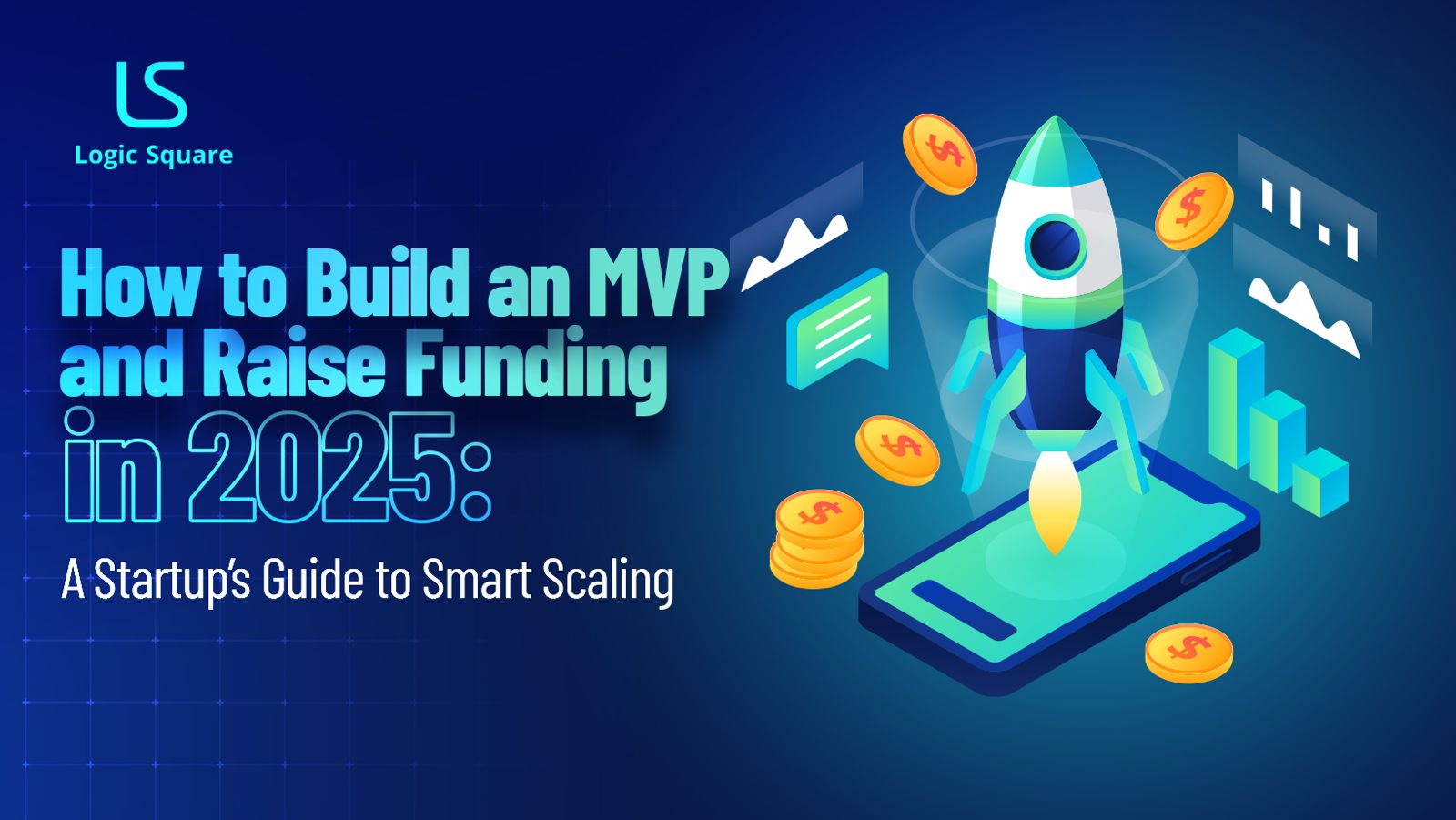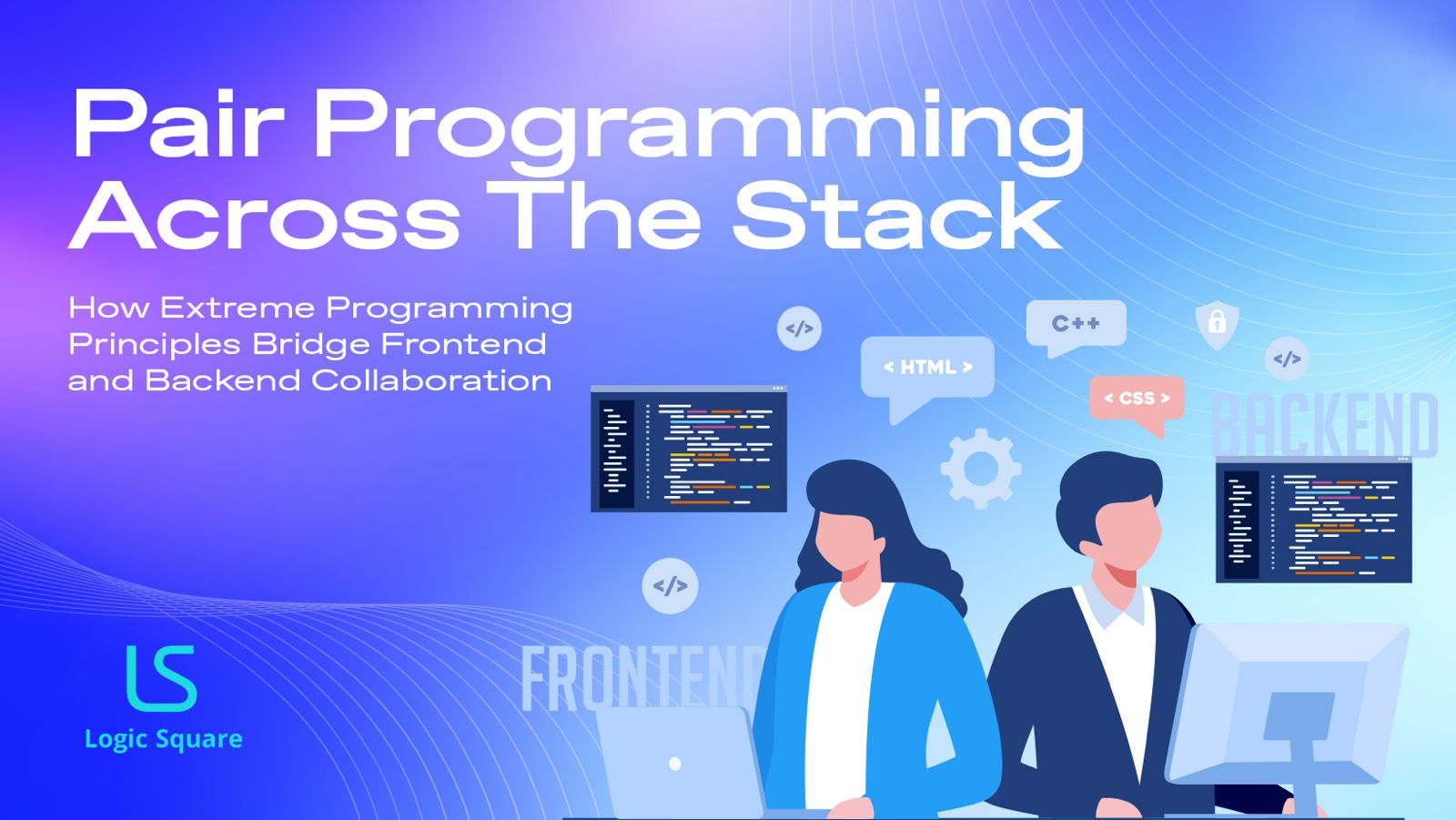Have you ever wondered how your coffee machine knows to start brewing just as you wake up or how your smartwatch reminds you if you have skipped your cardio sessions? The answer lies in the Internet of Things (IoT), a network of connected devices silently working behind the scenes to make our lives easier, safer, and even more futuristic.
While pre-IoT life wasn’t devoid of comfort, it lacked the effortless integration and data-driven intelligence that defines our connected world now. The days of manual adjustments are gone. Today, devices anticipate our needs, creating a personalized and responsive environment– ranging in almost all economic sectors. This blog is a testimonial to examples of the real-world Internet of Things and how they transform our homes, workplaces, and cities. Let’s dive in more for details.
Table of Contents
ToggleThe Growing Significance Of IoT Applications In Business
The Internet of Things (IoT) is becoming an integral part of business, with its impact growing significantly. As of now, 83% of organizations globally have already adopted IoT applications to improve their efficiency.
According to a McKinsey report, IoT applications are projected to have a total economic impact ranging from $3.9 trillion to $13 trillion annually by 2026.
This growth is fueled by various sectors’ massive adaptation of IoT devices, enabling them to ensure a smoother flow of different business processes. For instance, real-time data from connected machines in the manufacturing sector allows for predictive maintenance, minimizing downtime and saving money upon fixing resources. Retailers are using IoT sensors to track inventory in real-time, ensuring shelves are always stocked and fulfilling online orders seamlessly. Similarly, many other industries are also benefiting from adopting IoT devices.
Undoubtedly, the significance of IoT applications in business will continue to grow, redefining industries and creating exciting opportunities for those who embrace its potential.
15 Cool Examples of Internet of Things Applications
Think for a moment: You have a house where your control lights, thermostat, AC, and security system are all from your phone. Isn’t it amazing? In this blog, we have covered 15 examples of IoT applications that are making things easier, smarter, and more efficient for us.
1: IoT Examples In the Mining Industry
The mining industry serves as a primary source of raw materials for almost all industries. However, it has always faced intense criticism due to its profound environmental impacts and miner’s safety.
But nowadays, by using devices such as drones, sensors, and autonomous vehicles, mining companies are enhancing their overall operations and addressing environmental concerns, which was never possible before the introduction of IoT. These devices also prioritize the safety of miners.
A few companies that have deployed IoT devices in mining include Anglo American, Barrick Gold, BHP, Freeport McMoRan, Fortescue Metals, and Newmont. IoT spending worldwide was $1.4 billion in 2020. The projection is for it to reach $1.9 billion by 2025, demonstrating a steady compound annual growth rate (CAGR) of 6.2%.
Usages of IoT in the mining industry:
- Miners wear sensors that can track their location. These sensors can also trigger in case of any sudden exposure to harmful toxic gases.
- Vehicles with proximity detection sensors can help avoid collisions and maintain secure working distances.
- Real-time monitoring of air quality and methane levels in mines prevents accidents and explosions caused by toxic gas emissions.
- Greenhouse gas emissions from mining operations can be tracked with sensors.
2: IoT Application In Addressing Environmental Concerns
Our earth faces unprecedented environmental challenges, from climate change to pollution. But amidst this crisis, the Internet of Things (IoT) devices with billions of sensors gathering real-time data on air quality, water health, and resource usage are helping address environmental concerns. For instance, XiO operates as a cloud-based system, actively preventing the unnecessary waste of drinking water, wastewater, and water utilized for irrigation practices.
How does IoT benefit the environment?
- Forest Fire Detection: When a forest fire erupts, a large amount of CO2 is generated. By deploying a network of IoT sensors, agencies can detect gas and curb forest fires. These IoT sensors are battery- and solar-powered and use LoRaWAN and satellite communication to provide coverage even in remote areas. CO2 sensors like Milesight and Libelium Smart Environment Pro can detect carbon dioxide levels above 400-5000 ppm.
- Biodiversity Tracking: Wildlife tracking through IoT entails equipping endangered animals with collars or sensor tags that transmit data on their location and behavior in natural habitats. This technology empowers researchers to track migration patterns, pinpoint potential threats, and establish wildlife corridors to ensure safe passage.
- Emission Monitoring: IoT-based systems enable the detection of alterations in gas levels like H2S, CO2, and VOc in the refinery. It helps in signaling potential safety hazards or environmental concerns.
- Minimizing Light Pollution: IoT devices like intelligent lighting systems are helping combat light pollution, which is an often overlooked form of pollution that disrupts natural wildlife cycles. Today, with advancements in technology, these systems can be programmed to emit only the essential amount of light, automatically turning off when not in use. For example, Schréder, a company specializing in IoT-driven intelligent lighting solutions, is dedicated to minimizing light pollution and promoting environmentally conscious illumination practices.
3: IoT Applications in the Automotive Industry
Modern car manufacturers are equipping their cars with many sensors and AI to create sophisticated IoT systems. This is why the global IoT automotive industry, in terms of revenue, reached USD 131.2 billion by 2023 and is projected to reach USD 332 billion by 2028 with a CAGR of 19.7%.
These systems are transforming the automotive industry by introducing innovative solutions that enhance efficiency, road safety, and overall driving experience.
How IoT Is Helping the Automotive Industry
- Telematic System: IoT can collect real-time data from vehicles by enabling telematic systems. This data includes information about engine performance, location, fuel consumption, and battery prediction( in the case of EV). This helps optimize vehicle maintenance and improve fuel efficiency.
- Allows V2V Connectivity: IoT allows cars to communicate with each other (V2V) and with everything (V2X). This connectivity increases road safety by providing real-time information about traffic conditions. Vehicle-to-vehicle connectivity also allows automated braking systems in case of any emergency.
- Smooth Driving Experience: IoT contributes to the development of smart in-car systems. Features like voice-activated controls, integrated navigation systems, and autopilot provide users with a more convenient driving experience.
- Vehicle Maintenance Prediction: New-age cars with IoT technology can track the status of different parts and predict problems before they turn into big issues. This smart way of taking care of cars helps prevent breakdowns and ensures the vehicles are more dependable.
4: IoT Applications in the Agriculture Industry
As the global population is increasing, the need for food production has surged many folds, pushing for the adoption of smart agricultural practices.
This is why, today, farmers use a network of smart sensors coupled with AI to optimize agricultural practices. These systems employ many sensors to collect real-time data on soil moisture, weather conditions, and humidity. This enables them to make data-driven irrigation decisions.
Controlled irrigation combined with weather forecasts contributes to water conservation by delivering precise amounts of water to plants. This helps in reducing water wastage and promotes sustainable irrigation practices with minimum resource utilization.
The estimated size of the Agriculture IoT Market was USD 10.97 billion in 2022, increased to USD 12.33 billion in 2023, and is projected to exhibit a CAGR of 13.88%, reaching USD 31.03 billion by 2030.
Internet of Things benefits in agriculture:
- Monitoring Livestock: Smart IoT devices help farmers keep a watchful eye on animal health, providing real-time data on body temperature, feeding patterns, and overall well-being.
- Watering Automation: Smart agricultural practices powered by IoT technologies allow optimized utilization of resources like water. Multiple sensors are deployed in fields to monitor soil moisture levels. These sensors collect real-time data and send it to the connected device, where farmers can access this information remotely. This helps them in making irrigation decisions.
- Efficient Pest Control: Various sensors like low-power cameras, high-power thermal sensors, fluorescent image sensors, and gas sensors are connected to a database collection system and act as IoT & help to detect pest infestation precisely. By using this data, farmers can efficiently spray the pesticide only where needed.
5: IoT Applications in Logistics
IoT applications are crucial in revolutionizing logistics and fleet management by providing real-time tracking, monitoring, and optimization solutions. Hence, various companies like UPS and FedX use IoT in their operations every day. Here’s how IoT apps participate in logistics.
- Asset Tracking: IoT-enabled devices, such as GPS trackers and RFID tags, allow for real-time tracking of shipments. This enables logistics companies to monitor the location and condition of assets throughout the supply chain, ensuring transparency.
- Fleet Optimization: Various sensors collect data from vehicles, including fuel consumption, route optimization, and engine performance. This data is further used to optimize fleet operations, which results in improved productivity. This has been made possible because of IoT.
- Supply Chain Visibility: IoT applications provide end-to-end visibility into the supply chain by capturing data at each stage of the logistics process. This visibility enables stakeholders to track inventory levels, monitor order fulfillment, and anticipate potential disruptions.
- Temperature and condition Monitoring: IoT sensors equipped with temperature and humidity monitoring capabilities ensure the integrity of temperature-sensitive goods ( like vaccines) during transit. By continuously monitoring environmental conditions, logistics companies can maintain compliance with regulatory standards.
- Driver Safety and Compliance: IoT apps help enhance driver safety and compliance with regulations by monitoring driver behavior, such as speeding, harsh braking, and hours of service. Real-time feedback and alerts enable fleet managers to address safety concerns promptly and ensure adherence to regulatory requirements.
- Route Optimization: IoT-based route optimization solutions leverage real-time traffic data, weather conditions, and vehicle capabilities to identify the most efficient routes for deliveries. By minimizing travel time and fuel consumption, these apps reduce operating costs and improve delivery accuracy.
6: IoT applications By Wearables
In recent years, several wearable devices like smartwatches have gained momentum, providing a boost to the IoT environment. Companies like Apple, Samsung, Garmin, and Google have ventured into this domain. These wearables monitor various health metrics, including heart rate, caloric intake, sleep patterns, and other activity levels, providing users with comprehensive insights into their ongoing lifestyle.
How IoT Devices Are Easing Our Lives?
- IoT-enabled Smart Clothing: Wearable technology has extended to smart clothing embedded with IoT-based sensors. For example, “Commuter x Jacquard” is a collaboration between Levi’s and Google. This non-stretch denim jacket connects to your smartphone via Bluetooth, can screen phone calls, and controls music volume.
- Environmental Monitoring: IoT-based wearables include sensors for environmental parameters like air quality or UV exposure. By collecting and transmitting this data, wearables contribute to broader environmental monitoring initiatives within the IoT framework.
- Location Tracking and Navigation: Smartwatches with IoT networks like LoRaWAN for broader coverage, especially in remote areas where cellular connectivity is weak. This allows for real-time tracking of individuals, even in emergencies.
- Environment Monitoring: Wearables with IoT applications track environmental factors like humidity, air quality, and UV exposure. This real-time data empowers users to make informed decisions for outdoor activities like hiking or trekking, ensuring a safer experience.
- Measuring Health Conditions: The transformative role of IoT becomes palpable through gadgets like fitness trackers and smartwatches. Beyond serving as mere accessories, these devices act as sophisticated health companions by leveraging IoT capabilities.
7: IoT Applications In Spatial Computing
IoT has a crucial role in spatial computing. Many of you have heard this term for the first time. Hence, let’s get into detail.
Spatial computing involves digitizing activities encompassing people, machines, objects, and their environments, enabling users to engage with computers more immersively through the fusion of digital and physical worlds. With the introduction of mixed reality headsets like Meta Quest & Apple Vision Pro, spatial computing has taken a significant leap. These devices are seamlessly integrated with other smart devices to make smart IoT applications and environments.
With the integration of IoT technologies, these headsets can get real-time data from interconnected devices to enhance the user experience further. This interconnectedness allows users to not only experience immersive digital and physical interactions but also enhance the device’s functionality by leveraging real-time data from the IoT ecosystem.
8: IoT Applications In the Healthcare Industry
The healthcare industry is one of the pioneer industries in which IoT applications have been used for a long time. However, significant growth has been observed in the aftermath of Covid-19.
This change indicates a shift towards more patient-centric and technologically advanced healthcare systems. As per the report by Statista, IoT in healthcare has generated a revenue of $108.60 billion in 2023 and is projected to grow somewhere around $167.70 billion in 2028 with a CAGR of 11.47%.
Numerous IoT devices offer the capability for real-time monitoring of essential signs, medication adherence, and overall health conditions. This real-time data helps healthcare providers to proactively remotely monitor patients, make informed decisions, and reduce the need for frequent hospital visits. Here is how the Internet of Things applications are working for the healthcare industry.
- Glucose Level Monitoring: CGM(continuous glucose monitoring) devices like SIGNOS are equipped with sensors that track blood glucose levels promptly, alerting patients on their smartphones when levels are elevated or reduced. These connected ecosystems are a good example of Internet of Things applications.
- Remote Patient Monitoring: Senors-equipped medical devices can detect early vital signs like pulse rate, heart rate, activity levels, and sleep cycle. Any abnormalities in this pattern can signal stress, anxiety, or other complications, alerting healthcare providers about their health situation. A few of the devices in this niche are Lief, Abilify MyCite, Muse, TouchPoints, and Thync.
- Robotics Surgery: Robotic medical equipment connected through IoT sensors is employed in various medical interventions. Internet-connected robots, inserted into the patient’s body, allow doctors to operate remotely, tracking muscle and nerve movements and providing real-time progress updates. Companies like Asensus Surgical and Intuitive Surgical are developing devices that can work remotely to perform complex surgeries.
- Smart Asthma Inhalers: These inhalers are equipped with sensors that are connected to the smartphone, reminding the person about the dosage timing. Also, these sensors help health apps record a pattern that can be used to predict asthma attacks and reduce their severity. Inhalers like Propeller, BreatheSuite, and CapMedic are some FDA-certified smart inhalers that are good examples of IoT applications in the healthcare sector.
9: IoT Applications in Sports
The application of IoT in sports has been used for a long period; however, significant momentum for IoT in sports was gained in the early to mid-2010s. Leading sports organizations, like NFL, NBA, Copa America, English Premier League, Formula1, FIFA & IPL, have spearheaded exploration, conducting proof-of-concept studies to actively incorporate IoT into their daily operations. Here is how IoT is incorporated in sports.
- Enhance Fan Experience: IoT devices have revolutionized the sports-watching experience. In stadiums, smart infrastructure, including tracking sensors and cameras, provides spectators with instant access to crucial game statistics. Also, streaming devices can offer customized content, real-time highlights, and multiple camera angles, allowing fans to tailor their viewing preferences.
- Referee Assistance: IoT aids referees with technologies like goal-line technology and video assistant refereeing (VAR) in the case of football. Various other tracking devices are being used in almost all sports to declare precise decisions when it comes to close encounters.
- Smart Training Facilities: IoT sensors allow athletes to precisely monitor equipment usage, environmental conditions, and athlete well-being, optimizing training programs.
10: IoT Application Example in Smart Homes
Internet of Things (IoT) applications have revolutionized the concept of smart homes. IoT applications seamlessly interconnect various devices within the household, transforming everyday tasks into efficient, automated processes.
Intelligent thermostats that adapt to preferences, intelligent cooling systems, or security systems that can be controlled remotely– examples are many. The smart home ecosystem enhances convenience, energy efficiency, and overall lifestyle. This interconnected web of devices empowers residents with unprecedented control, making the home not just a living space but a responsive, intuitive environment tailored to individual needs and preferences. Many smart home systems provide seamless connectivity across multiple smart devices. Google’s Nest, Amazon’s Alexa, LG ThinQ, and Samsung SmartThings are a few of them.
Advantages of IoT in Home Automation:
- Efficient Energy Usages: Smart home devices optimizing the use of resources. IoT-enabled thermostats, lighting systems, and appliances can adapt to users’ preferences and adjust settings automatically, reducing energy consumption and lowering electricity bills.
- Remote Monitoring: One of the significant advantages of IoT in home automation is the ability to monitor and control devices from anywhere with an internet connection. Whether away on vacation or at work, homeowners can remotely access and manage their smart home systems, ensuring peace of mind.
- Centralized Device Management: The best thing about home IoT devices is their management– centralized through your smartphone.
11: IoT in Law Enforcement
The Internet of Things has made its presence felt in the arms and ammunition sector. Below are some instances of weapons incorporating IoT-enabled sensors for enhanced transparency in operations.
Arms manufacturer “Armatix” has recently developed a handgun that is paired with an RFID-enabled watch. Users can activate or deactivate the weapon by just entering the pin on the watch.
Similarly, Yardarm’s smart gun allows commanding officers to monitor various statistics related to gun usage. The sensor, situated in the handgrip, keeps tabs on when the gun is taken out of its holster and the number of shots fired. It can even determine the direction in which the gun is aimed when fired. This creative application of technology is supposed to enhance transparency in police operations.
12: Internet of Things Example In Smart Retail
Applications of IoT aren’t restricted to manufacturing only; they are paving their way into retail, too.
For instance, Amazon is revolutionizing its retail encounter by integrating IoT with its brand, AmazonGo. You can picture this as a brick-and-mortar store devoid of traditional cash counters and sales personnel. In this innovative shopping space, customers simply enter, select their items, and exit, with the purchase amount seamlessly deducted from their accounts. This streamlined and cashier-free experience represents a cutting-edge approach to retail, emphasizing efficiency and convenience.
The store and items are equipped with sensors. When you pick a product, it is automatically included in your cart. Additionally, if you decide not to purchase and return the product, it is removed from the cart. Payment for the items in the cart is seamlessly processed through the associated Amazon account. This straightforward yet efficient retail model illustrates the potential future of business processes in retail stores.
13: IoT Applications in Smart Cities
When we imagine a smart city, we think of a city that is equipped with smart sensors that perform autonomous tasks. These cities are designed to harness the power of technology to improve the quality of life.
In smart cities, the use of IoT has become more widespread. It involves the deployment of IoT-enabled gadgets like Bluetooth sensors, RFID tags, and smart meters, which gather real-time data for analysis down the line. With the insights gleaned from this data, municipalities can enhance infrastructure, services, public utilities, and various other dimensions of urban life.
A Few IoT Applications in Smart Cities:
- Smart Traffic Management
IoT sensors can be installed on traffic lights, roadways, sidewalks, and vehicles. These sensors can collect data on traffic patterns, congestion, and accident-prone zones, which can be used to regulate traffic and improve road safety.
- Waste Management
IoT-powered solutions are helping municipal corporations optimize collection schedules & routes with real-time tracking of waste levels.
- Smart Energy Management
Smart sensor-based lights (IoT devices) are employed to control energy consumption in buildings, streetlights, and underpasses, depending upon temperature conditions.
14: IoT In Toll Collection & Road Safety
National Highways & Expressways are prime examples of IoT applications. The introduction of the RFID-based toll management system has optimized toll collection, replacing the existing manual process that often resulted in lengthy wait times. These applications have ensured smoother traffic on highways.
Apart from this, numerous speed cameras are also installed on the highways to check if any vehicle is speeding above the permissible limit. If anyone is found violating the speed limit, they are slapped with hefty tickets( fine). This ensures that drivers maintain appropriate speeds and avoid unnecessary lane changes, enhancing road safety.
15: Smart Manufacturing Systems Powered by IoT
Internet of Things (IoT) applications revolutionize production processes by introducing real-time insights into machinery health. In traditional manufacturing settings, routine maintenance often relies on manually scheduled intervals.
Today, IoT-enabled smart systems change this model by continuously monitoring the performance of machinery through sensors and connected devices. These sensors collect data on various aspects such as temperature, vibration, pressure, and other critical parameters that indicate the health of the machinery. Through the analysis of this real-time data, the IoT application can identify patterns and anomalies that may signal potential issues. Predictive maintenance algorithms use this information to foresee when a machine is likely to require maintenance.
Developing an IoT App: What’s under the hood?
To develop Internet of Things (IoT) applications, you need to combine hardware and software components seamlessly. There’s a complex setup that integrates sensors, communication protocols, and a strong backend system behind the UI/UX you interact with. This combination allows the app to connect and function effectively. Each IoT application necessitates the integration of four key components: cloud technology, specialized hardware, a dependable network, and user-friendly software.
Tech Stack For Creating IoT Apps
The technology stack required to create an IoT app consists of the following elements: programming language, framework, cloud IoT platform, protocol, hardware, and sensors. If you are uncertain about your need, get a consultation from an IoT consultation like Logic Square Technologies. Here are the required resources.
Programming Languages:
- C/C++
- JavaScript
- Python
- Ruby
Frameworks:
- Node.js
- IoT.js
- Device.js
- Angular
Cloud Platforms:
- Arduino (open source)
- AWS (Amazon Web Services) IoT
- Google Cloud IoT
- IBM Watson
- Microsoft Azure IoT
- OpenHAB
Protocols:
- 2G/3G/4G/LTE/5G-NR
- AMQP
- MQTT
- Wi-Fi
Hardware:
- Arduino
- FPGA controllers
- Google TPU
- Raspberry PI
Sensor Requirement:
- 1-Wire
- ADC
- Analog
- RF433
- RFID
Transform Your Business with IoT Applications– Powered By Logic Square Technologies
Being an IoT development company in USA, Logic Square Technologies has created top-notch business solutions for many start-ups. With a deep understanding of network protocols and various other subjects, we’re equipped to handle IoT projects of any complexity.
Connect with our team of experts who specialize in developing innovative IoT solutions tailored to your business needs. From concept to deployment, we’ll guide you through the process, ensuring your venture stands out in the interconnected world.
Take Away
As we’ve seen, the Internet of Things is becoming a part of our everyday activities. It’s making cities smarter and helping us with personal health. It’s changing how industries work or giving regular people more control over devices– the potential of IoT is huge and always changing.
So, are you ready to be part of this connected future? Whether you’re a business pro or just curious, the possibilities are endless. Start aligning your business with IoT devices and see how it can make your world better.





